Arctic Security Dialogues I | United States Air Force Arctic Strategy: Perspectives and Insights
On July 21, 2020 Secretary of the Air Force Barbara Barrett released the U.S. Air Force Arctic Strategy noting the “Arctic is among the most strategically significant regions of the world today.” According to the Air Force, “[t]he strategy outlines the Department’s unique regional role and efforts to optimize Air and Space capabilities throughout the region in support of the National Defense Strategy.”
The Air Force Arctic Strategy outlines four lines of effort to include:
• Vigilance in all domains
• Projecting power through a combat-credible force
• Cooperation with allies and partners
• Preparation for Arctic operations
With significant defense assets located at Joint Base Elmendorf-Richardson (Anchorage), Eielson Air Force Base and Fort Wainwright (Fairbanks/North Pole), and Fort Greely (Delta Junction) as well as complementary capabilities in Canada and Greenland, then Air Force Chief of Staff General David L. Goldfein said the Air Force’s Arctic Strategy demonstrates an “unwavering vigilance to protecting the homeland” and “represents a strategic benefit that extends well beyond the region itself.”
We were pleased to host a group of distinguished military leaders for a facilitated round table discussion regarding the Air Force Arctic Strategy to include contextual perspectives about the new Arctic, the Arctic in context of Great Power Competition, and the role and importance of the Air Force in Alaska and the Arctic.
Speaker Quotes
General Joseph W. Ralston
“It’s one thing to publish a strategy, but now the resources have got to follow and if you don’t have the resources, you’re not going to be able to implement that strategy. With regard to vigilance, I think the Air Force has stepped up to that [...]. As General Krumm talked about, there are still issues that need to be sorted out, in particular communications: how do you do that? How do you make sure that he can get the radar data from the North Warning System back to his command post so he can make the right decisions with regard to the NORAD Mission? Do you need a redundant path over what we’ve got today? I don’t have a solution to that but I think it is something that the Air Force needs to look at: do you have a combination satellite as well as terrestrial? that needs to be worked on and needs to be funded to do that.”
“Something that both the Obama administration and the Trump administration have agreed upon is that the Indo-Pacific is important. Again if you look at the geography of Alaska, we are key players in the Indo-Pacific arena and that’s something I think needs to be pounded on inside Washington, D.C. as you look into the Indo-Pacific and you try to disperse your bases. Ok, I agree with that but don’t forget that Alaska is part of that.”
General Philip M. Breedlove
“We are a part of a joint team and as several of our speakers have mentioned, this Air Force Strategy does well as it nestles under our National Defense Strategy and National Security Strategy. I would also say, as you have alluded, it mates well to where NATO is headed as it wakes up to the concerns of the North [...]. Our position in Alaska, our position in the North, and the reach that it gives the U.S. (and ‘reach’ means a lot of things - reach in surveillance; reach in fighter defense forces as part of NORAD; reach and lift and all the other things that we bring to that join team) needs to be emphasized. As General Ralston laid out so eloquently, our ability to respond as a part of that joint team from those northern bases really puts us in a position not dominated by the fact that we have so much assets up there but what we can do for that more joint team.”
“This is not a cheap easy thing to do in the high north and we need to keep our eyes focused on that we have some really amazing assets there. If we don’t do the hard work of making them work in this tough environment and providing them the logistics as General Fraser mentioned, then we will have an empty capability in the North. As I mentioned, cooperation: I’d like to say that Russia is practicing sovereignty by presence. We're going to have to cooperate with them, they’re already there, they’ve improved land, air, and sea capability in the North. They see the Northern Passage opening up and they want to be able to dominate that passage and really we haven’t challenged them there yet but China has.”
“We’ve been trying to hug the bear, we’ve been trying to bring Russia into a larger, Western community of values and ways of doing business. In those three decades, they’ve invaded Georgia in ‘08, then in the spring of ‘14 they invaded Crimea, and then later in ‘14 they invaded the Donbass, and now they’re power projecting into places like Libya, etc. What we’ve learned is that the bear is not really right now excited about being hugged, the bear is excited about expanding itself into spaces that the Western world has given up as far as leadership in some of these areas. During those three decades, we accepted that we would have free and clear transit of the Atlantic if we needed to reinforce Europe or to move to the Middle East or to take some of the paths to the Far East and the South China Sea, etc. What we now know is that that is not permissive space and that we once again are going to have to earn our way across the Atlantic.”
General Douglas M. Fraser
“We are still, I would argue, living off of infrastructure that was built during the Cold War and we haven’t really changed much from that infrastructure. We’ve modernized capabilities within those locations but we haven’t really broadened up beyond that. I think one of the challenges for this strategy is really truly looking at the resource implications of the strategy for what it means for Alaska, specifically with what it means more broadly internationally. We haven’t done that to the way I think we ought to.”
“I think we ought to pay a lot of attention to the Aleutians because they provide a string across the approaches into the Bering and as more and more strategic activity happens within the Bering and through the Northern approaches, the Aleutians are going to be strategic and key terrain. That’s going to present its own challenges as we move forward but I think that’s an area that we really need to pay attention to and the Air Force and Space Force will be key contributors into addressing the issues that we see out there.”
“We’ve always all talked about the strategic location of Alaska and that’s a strategic location not only for North America but on a global basis. That’s what we’ve all been talking about so I think what we’re all recognizing is it's time to leverage the strategic location of Alaska and not put it off to the side.”
General Carrol H. Chandler
“These are the most expensive bases in the Air Force, when you [look] at trying to maintain Elmendorf and Eielson, and that comes into play at budget time. But we have to remember that our competitors are going to get a full vote in that and the geography hasn't changed since the time of Billy Mitchell and Hap Arnold, so those investments are something that we're going to need to keep an eye on and not let get drowned out in the in the noise that will be the future budget debates.”
“This is a whole of DOD opportunity, if you will. Not just the services in the Department of Defense but all the [unintelligible] agencies. And that includes the state of Alaska. They have a large play in what goes on here, particularly in terms of things like warm water ports and gnome and other aviation related things or naval related things that go on around the state. Private industry, particularly petroleum, plays a large part in the area that we're talking about, as well as native corporations. And then, of course, I think the strategy does a good job of pointing out that Indigenous people in the state of Alaska have been here since the beginning of time and probably know more about this area that we can certainly learn. So I think the strategy did a good job of touching on all those things and again, I'm optimistic with regard to the strategy itself. I think the jury's still out on the resources that we need to back that strategy up, but in the short term I think we have a foundation that's been laid by leadership in the past that would certainly allow us to build on if we take that seriously and push forward.”
“Regardless of where the political lines go here in the next few months, we may well have seen a high water mark in Department of Defense budgets here for at least the foreseeable future. So it's going to be a fairly daunting task to be able to try to prioritize all of these things to actually fund a strategy that's going to be meaningful in the arctic, but I think it's an imperative that that we in fact work on.”
General Patrick K. Gamble
“In 1990, we were at the absolute top of our game, when the first iraq war kicked off and it was because we actually went in, and not simulated, not tabletop, but we actually went in and did it and tried to move units in at scale and we worked through the problems over all those years. We had budgets that supported the requests for resources and as a result there was a continuity buildup for the desert that probably was, what the war colleges would say, the gold standard.”
“Today it's not the desert. today we have an entirely different environment in which, if you read the army manuals, they will say for example, water is the single biggest issue to be faced in the Arctic for army operations. And I got to looking at that and digging down into it and the army's done an amazing amount of research looking at how many calories are burned by soldiers who are working in snow or working on skis–– what can they eat, how do they digest and handle certain kinds of foods. Well, it turns out all this stuff is totally different than what we're used to. You can't put a camelbak on a soldier and march ‘em through 40 degrees below zero. If you put sustained troops in one position for a long period of time, we don't know what that's going to be like because our exercises have been so short and we've always had the ability to go right back to the main base and kind of get fixed again. Sustainability is going to be huge.”
“The arctic can't be a pickup game and the only way you know what you don't know is to go do it. Is to actually rehearse, not simulate, but rehearse. Can we do that? We've got a million acres, sixty thousand square miles, we've got a bridge across the river with a little bit more rail. We can go in, in Alaska, and do large-scale operational level rehearsals. We can bring the battle group up–– we've done that before. We can look at how a joint team would support any number of scenarios in the arctic with a totally different look than we've ever looked before.”
“It's interesting to watch the Russians–– the troops they have and the bases they have in the Arctic are there full-time. These people live and work full time in the Arctic because they found out that you can't build an Arctic support scheme for large numbers of support vehicles, airplanes, people–– you can't build that and then walk away from it and go spend three quarters of the year worrying about the desert or jungle someplace and then come back and then do a little bit of Arctic. The equipment, the production of water for example, those are one-of-a-kind things that can only be done in the Arctic, the Arctic way. And the Russians found out that you just gotta bed down and make it permanent. We have no bid down. We have no permanence up there. We don't know what we don't know in this particular area.”
Lieutenant General David A. Krumm
“The Arctic's capacity as a strategic buffer is eroding. It's making it an avenue of approach to the homeland due to advancements by our great power competitors like Russia and China. As long as North America has existed, the US and Canada have been protected by two great oceans and this formidable environment to the north, but our adversaries’ capabilities to directly attack our homeland have lept forward, and they have continued to advance the capabilities with nuclear, conventional, and cyber-space weapons."
"I would say that cooperation with our allies and partners is probably our most important line of effort. Of the eight Arctic nations, the US is an ally with four of them and partners with two of them. The vastness and complexities of the Arctic necessitate that we work together, and we've got to cooperate and synergize our efforts; and make no mistake, we fly, fight, and win with all of those six other friends, but partners include non-traditional ones as well. Partners like our Alaska Native tribes, who are the people who know this region best and know no one has as much knowledge to provide than those who have been here since time began."
"We have to prepare for the Arctic operations. We have to prepare to train, we have to prepare to sustain, persist, and thrive - not survive - in the Arctic operations."
Speakers
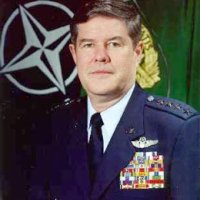
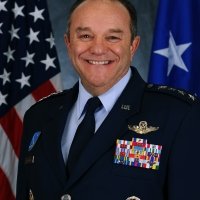
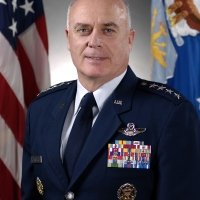
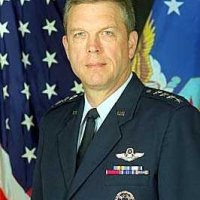
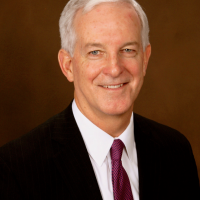
Introduction
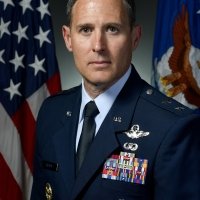
Moderators

US Ambassador-at-Large for Arctic Affairs; Former Chair, US Arctic Research Commission
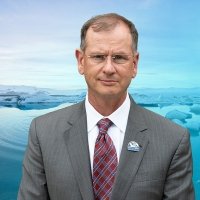
Senior Advisor, Arctic Security Affairs, Ted Stevens Center for Arctic Security Affairs, U.S. Department of Defense
Hosted By

Polar Institute
Since its inception in 2017, the Polar Institute has become a premier forum for discussion and policy analysis of Arctic and Antarctic issues, and is known in Washington, DC and elsewhere as the Arctic Public Square. The Institute holistically studies the central policy issues facing these regions—with an emphasis on Arctic governance, climate change, economic development, scientific research, security, and Indigenous communities—and communicates trusted analysis to policymakers and other stakeholders. Read more


Kennan Institute
The Kennan Institute is the premier US center for advanced research on Eurasia and the oldest and largest regional program at the Woodrow Wilson International Center for Scholars. The Kennan Institute is committed to improving American understanding of Russia, Ukraine, Central Asia, the South Caucasus, and the surrounding region through research and exchange. Read more


Canada Institute
The mission of the Wilson Center's Canada Institute is to raise the level of knowledge of Canada in the United States, particularly within the Washington, DC policy community. Research projects, initiatives, podcasts, and publications cover contemporary Canada, US-Canadian relations, North American political economy, and Canada's global role as it intersects with US national interests. Read more


Kissinger Institute on China and the United States
The Kissinger Institute works to ensure that China policy serves American long-term interests and is founded in understanding of historical and cultural factors in bilateral relations and in accurate assessment of the aspirations of China’s government and people. Read more
